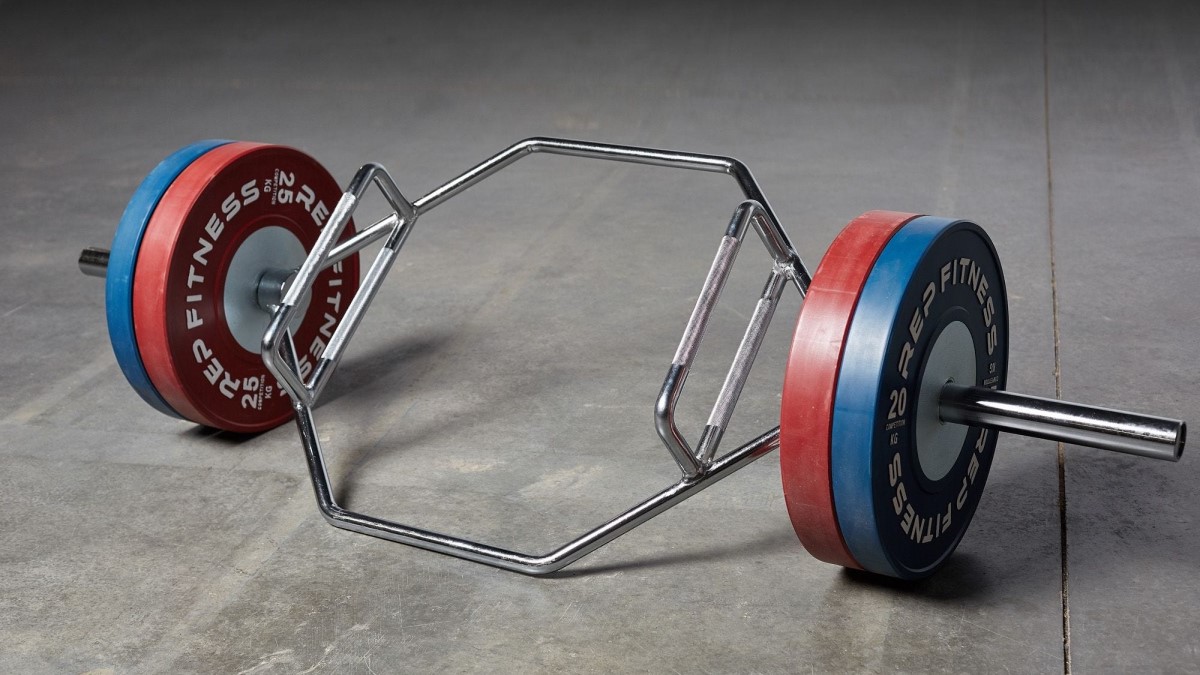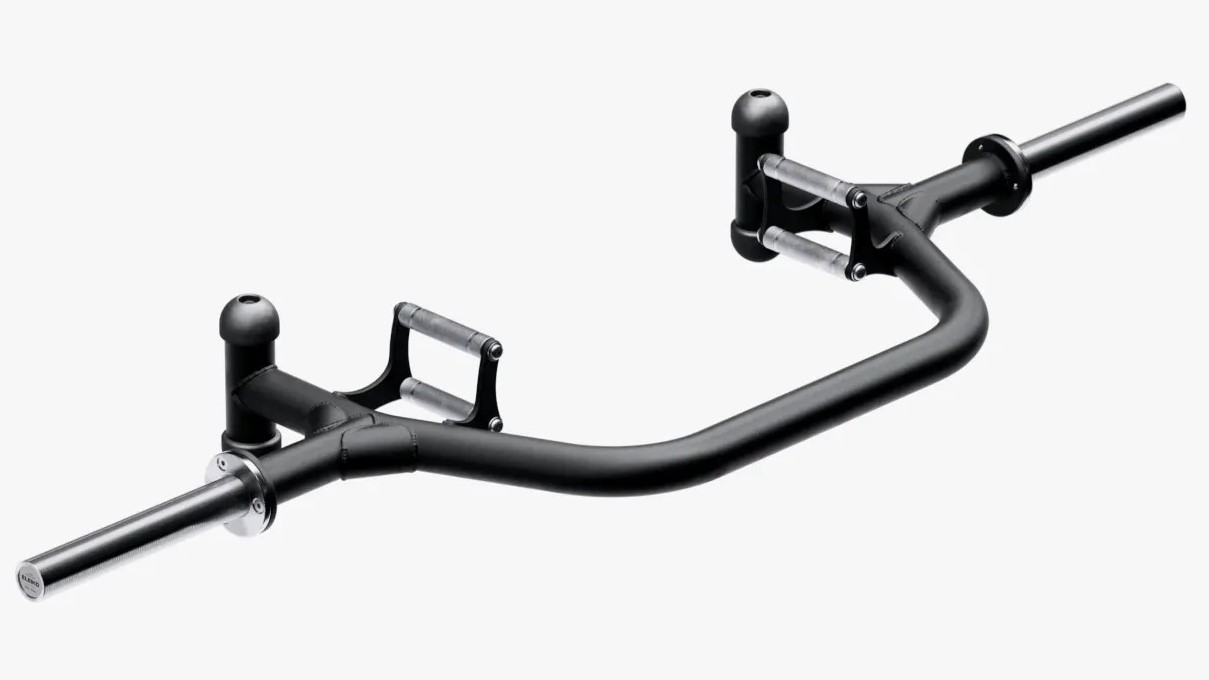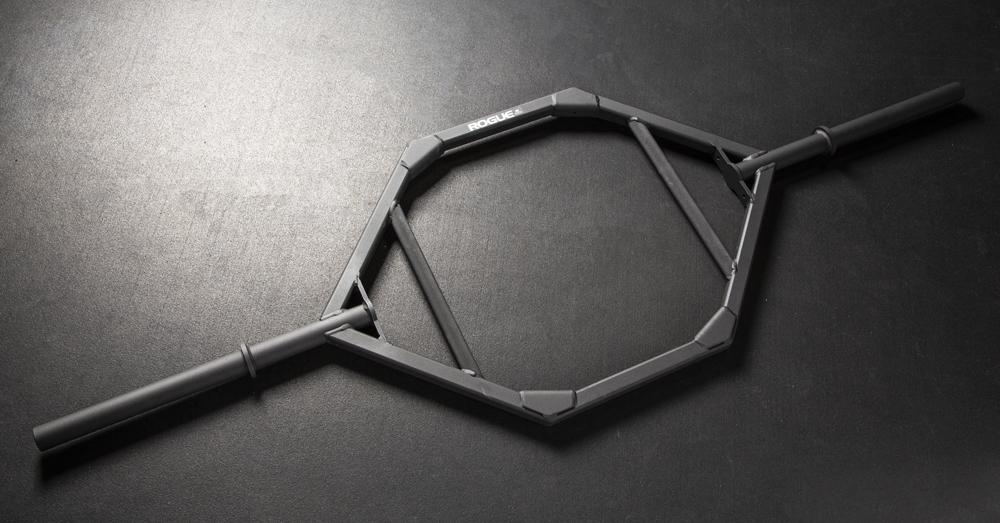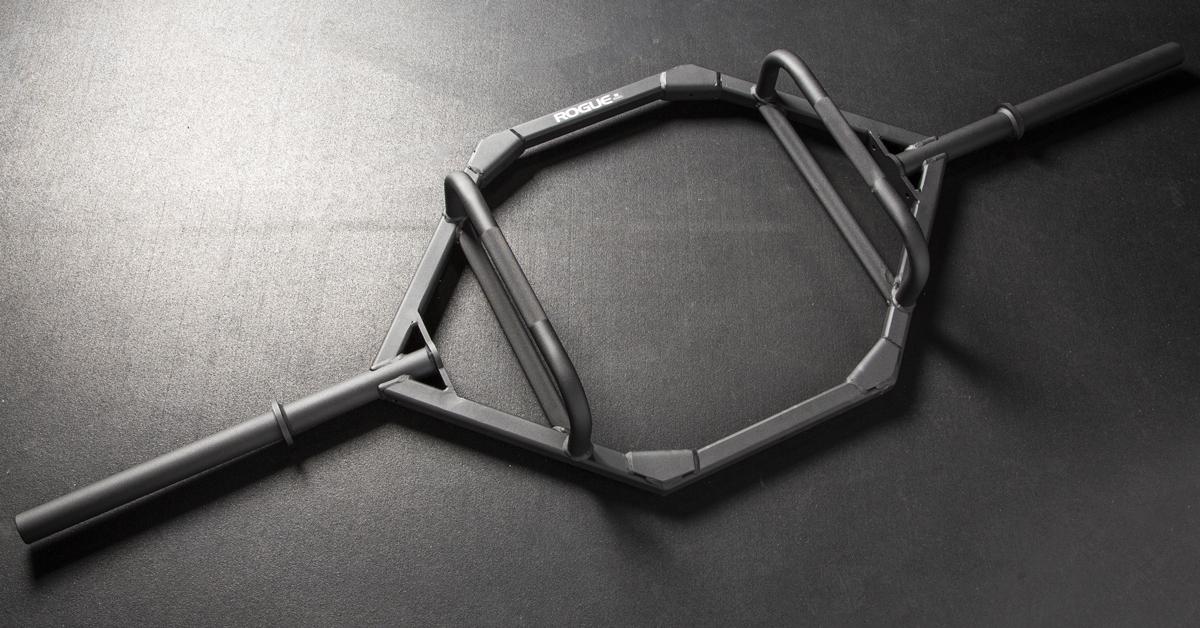It would be nice to know what that oddly shaped bar weighs so you can keep an accurate log of your training.
A straight 7ft olympic bar typically weighs 45 lbs or 44 lbs / 20 kg. With a hex bar it’s a bit more complicated…
Table of Contents
First – What is a Hex Bar (or Trap Bar)?
A hex bar is used for strength training as an alternative to straight-bar deadlifts, to keep the weight more favorably centered in line with your body’s center of gravity, instead of in front of your legs the way straight-bar deadlifts have to be done. People with back issues have an easier time doing the hex bar deadlift, whether due to injury or degeneration. Not as much pressure is put on their hips and spine.
It’s also called a trap bar because it’s named after the trapezius muscles, connecting the neck to the shoulder bones. These are worked when you do shrugs, which is one exercise this type of bar was designed to be used for. Many people still do shrugs with it too, but in modern use it is favored more often as a deadlift bar.
It is also called a hex bar because of its modern 6-sided (hex) shape. Originally it was a diamond-shaped bar, developed by Al Gerard, with a simpler construction.
It has enough room for the average person to step into, grab the handles, and lift the loaded bar up.
It could be used also as an overhead press bar, or bench press bar. Usually this kind of exercise is not done unless it’s a hex bar made long enough to fit into a power rack and rest on the safety bars.
How Much Does a Hex Bar Weigh?
Most likely, your hex bar weighs somewhere between 50 lbs and 70 lbs. 50-60 lbs is the most common.
There isn’t a standard weight for hex bars. Let’s look at some common models to help give you an idea of what yours probably weighs.
Nearly all trap bars available on the market are made to take olympic weights, not standard weights. The ends are 2″ diameter.
The Garden Variety Hex Bar

This is the most common hex bar you’ll see out there. Raised handles, circular tubing, chrome finish. The brand doesn’t really matter unless you come across one with different specs, because they all come from the same manufacturers in China.
This one weighs 55 lbs. It’s 71″ total length, and the loadable ends (I don’t call them sleeves because they are all one piece and don’t rotate on a hex bar) are 16″ long, the same as a full size olympic bar, to allow loading it up pretty heavy.
Some others out there might be 45 lbs, 56″ total length, with loadable ends only about 10″ long. That accounts for the weight difference. Shorter sleeves like that might be fine, depending on what types of plates you have and how heavy you’re planning on lifting. Bumper plates as shown in the pic above take up a lot of space on the bar, while 45lb iron plates take up about half that.
Hex bars without raised handles, and only the lower handles flush with the rest of the bar, will subtract maybe 5 pounds.
Super Heavy Example: Rogue TB-1
The Rogue TB-1 version 2.0 shown below weighs 68 lbs. It has a single pair of handles flush with the tubing.
Version 1 of the Rogue TB-1 weighed 78 lbs. They reduced the weight for v2.0, not so much to give people a lower starting weight (78 lbs isn’t much for a deadlift) but to make the bar a little easier to maneuver around. Hex bars are monsters you end up banging against stuff when you carry them around when you aren’t super careful.
Kind of Heavy: Rogue TB-2
The Rogue TB-2 below weighs 60 lbs, only 2 pounds more than the TB-1.
The only difference between the TB-1 and TB-2 is the extra raised handles on the TB-2, which apparently only weigh a pound each. These handles let you get into a higher starting position.
They raised handles also make the lift significantly easier than the flush handles that are prone to making the bar tip forward or back if you don’t have it gripped directly in the center.
Rogue’s hex bars are a huge 89″ long. That’s 7’5″. They made them so long to make them “rackable”, ie: fit on a 48″ wide power rack properly so you can load weight plates freely.
Lightweight: Titan Hex Bar

On the lighter end, see Titan’s hex bar at 44 lbs. Other companies sell one that’s virtually identical to it, with small differences in measurements. As you can see, they use round tubing throughout, not the 1.5″ square tubing that Rogue does.
The ends of this bar are a mere 9.75″ long, with an overall length of 56″, which is a typical approximate length of many hex bars you will encounter. Unlike Rogue’s bar, this kind of bar is not long enough to be rackable.
Open Hex Bars

The weight of modern “open” hex bars is all over the place from 45 lbs to 65 lbs. This design gives you more room to do various exercises.
Is It a Deadlift Bar or Squat Bar?
The mechanics of the movement actually are more like a squat than a deadlift. Your torso is a little more upright, and the weight is centered more in a vertical line with your body like a squat, whereas with a deadlift the bar is in front of you, requiring more bending at the hips to get your shoulders above the bar and the bar in front of your knees as you pull it up.
Nevertheless, we call it a type of specialty deadlift bar, not a squat bar, because of the way you reach down and grab the bar off the floor rather than having it rest on your upper back.



